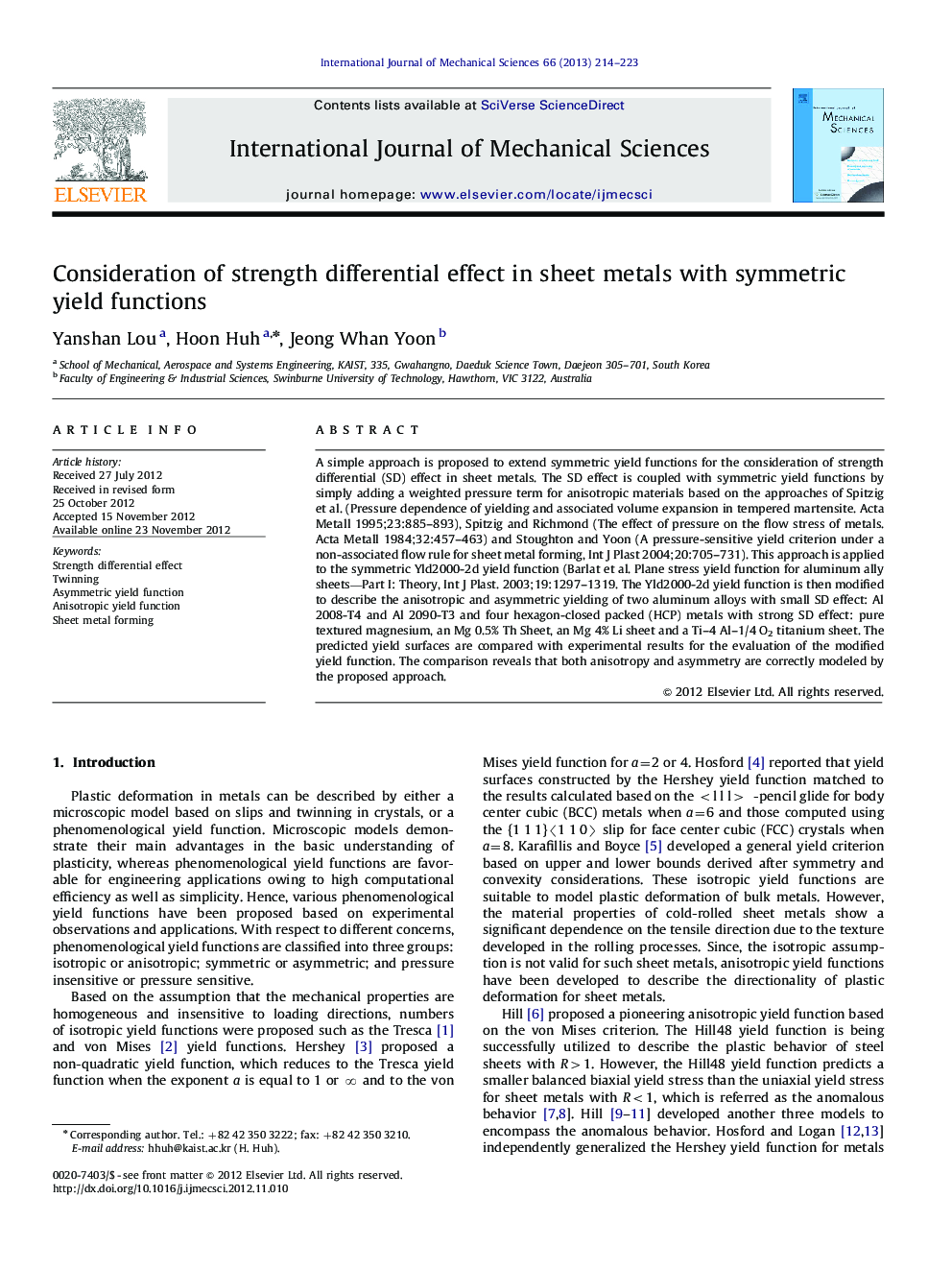| Article ID | Journal | Published Year | Pages | File Type |
|---|---|---|---|---|
| 783807 | International Journal of Mechanical Sciences | 2013 | 10 Pages |
A simple approach is proposed to extend symmetric yield functions for the consideration of strength differential (SD) effect in sheet metals. The SD effect is coupled with symmetric yield functions by simply adding a weighted pressure term for anisotropic materials based on the approaches of Spitzig et al. (Pressure dependence of yielding and associated volume expansion in tempered martensite. Acta Metall 1995;23:885–893), Spitzig and Richmond (The effect of pressure on the flow stress of metals. Acta Metall 1984;32:457–463) and Stoughton and Yoon (A pressure-sensitive yield criterion under a non-associated flow rule for sheet metal forming, Int J Plast 2004;20:705–731). This approach is applied to the symmetric Yld2000-2d yield function (Barlat et al. Plane stress yield function for aluminum ally sheets—Part I: Theory, Int J Plast. 2003;19:1297–1319. The Yld2000-2d yield function is then modified to describe the anisotropic and asymmetric yielding of two aluminum alloys with small SD effect: Al 2008-T4 and Al 2090-T3 and four hexagon-closed packed (HCP) metals with strong SD effect: pure textured magnesium, an Mg 0.5% Th Sheet, an Mg 4% Li sheet and a Ti–4 Al–1/4 O2 titanium sheet. The predicted yield surfaces are compared with experimental results for the evaluation of the modified yield function. The comparison reveals that both anisotropy and asymmetry are correctly modeled by the proposed approach.
► A simple approach is proposed to model strength differential (SD) effect. ► The approach is based on associated flow rules for incompressible sheet metals. ► The approach is coupled with Yld2000-2d to describe both anisotropy and SD effect. ► Modified Yld2000-2d correctly models anisotropy with small SD effect. ► Modified Yld2000-2d accurately models strong SD effect for HCP metals.
